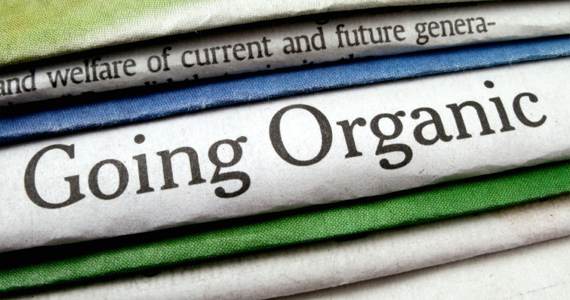
Organic labelling – how to tell if it’s the real deal
Author | Kirsten Alexander
Sometimes it’s easy to spot exaggerated claims but then there are hundreds of credible-looking labels that, on closer examination, could just as easily have been issued by an unscrupulous manufacturer, as by a genuine environmental assessor.
‘Organic’ is a prime example of one label that is misused. Mostly, that’s because the word ‘organic’ can mean several different things.
When cosmetics companies use the word, they are either being:
- Scientific – Their product contains a carbon-based compound — bearing in mind that carbon is found in everything that’s ever lived.
- Whimsical – Using their marketing prowess to appeal to our ‘pure’, ‘natural’, ‘organic’ needs.
- Green – Referring to the fact that some ingredients in their product were sourced from a legitimate supplier of plants grown without artificial fertilisers and pesticides.
It doesn’t guarantee an absence in their product of non-organic perfumes, colours or sudsing agents.
The word ‘organic’ on food labels may mean the ingredients were grown on farms that employ organic methods — using holistic cultivation methods and no synthetic fertilisers, herbicides or pesticides.
In Australia the use of the label ‘organic’ is heavily regulated by the Australian Quarantine and Inspection Service (AQIS) when produce is exported, but open to abuse for the domestic market.
Take, for example, a brand of pasta whose name looks a lot like the word ‘organic’. It displays labels saying “quality”, “gourmet” and, of course, “natural”.
But while it has many positive attributes, not one of its ingredients, however wholesome sounding, is organic. There’s no lie on the package; it merely offers me a suggestion of organic through its labels and images.
Similarly, some muesli bars have the word ‘organic’ in their brand name, but are made of a mix of “natural and some organic ingredients”.
Labels that say ‘certified organic’ are different. For both food and cosmetics, the ‘certified organic’ label guarantees the product has been scrutinised by a third party.
In Australia, there are seven organics certification companies that have been approved by AQIS:
- Australian Certified Organic (ACO)
- National Association for Sustainable Agriculture, Australia (NASAA)
- AUS-QUAL Limited (Aus-Qual)
- Bio-Dynamic Research Institute (Demeter)
- Organic Food Chain (OFC)
- Safe Food Production Queensland (SFPQ)
- Tasmanian Organic-dynamic Producers (TOP)
NASAA is one of the most common certifications. Lyn Austin, secretary of the NASAA, says, “Customers can have a degree of confidence that the label ‘certified organic’ has substance to it. It’s not completely subjective, being supported by third-party rules and regulations.”
Obtaining the right to use NASAA’s logo is complex but in essence growers must agree to comply with NASAA’s written standards, prove they have a management plan in place to run their land organically, and allow inspections of their farm (including soil samples and assessment of the contamination potential from neighbouring properties).
If they pass three years of surveillance (with annual and spot visits thereafter) they can use the ‘certified organic’ label. Until then, they label their products ‘conversion to organic’.
Genetic Engineering
Organics certification groups also keep an eye on the labels ‘GE free’ and ‘GMO free’.
Organic farming methods prohibit genetic engineering and modification but according to Lyn Austin it is hard to monitor.
She explains that it is nearly impossible to test products to the point you can be confident no genetically modified elements exist. Certifiers like NASAA do not issue labels claiming the product is GE- or GMO-free. The term they use is ‘non-GMO’.
Scott Kinnear, from the Biological Farmers of Australia, says Fair Trading law, administered through the ACCC, “imposes a burden of truth on a manufacturer who says their products are GE free”.
If a product labelled GE free is found to contain GE ingredients the manufacturer will be found in breach of trading laws. Companies that use the label ‘GE-free’ do so, he says, “at their peril” since penalties for misleading the public are serious.
Certification and labelling of Australian organics is about to undergo significant change, with Standards Australia pushing for one label and a unified national standard, a move applauded by most in the organics industry, including the Organic Federation of Australia
This article originally appeared in Green Lifestyle and is reproduced here with their permission. For more great stories, visit Green Lifestyle Online.





